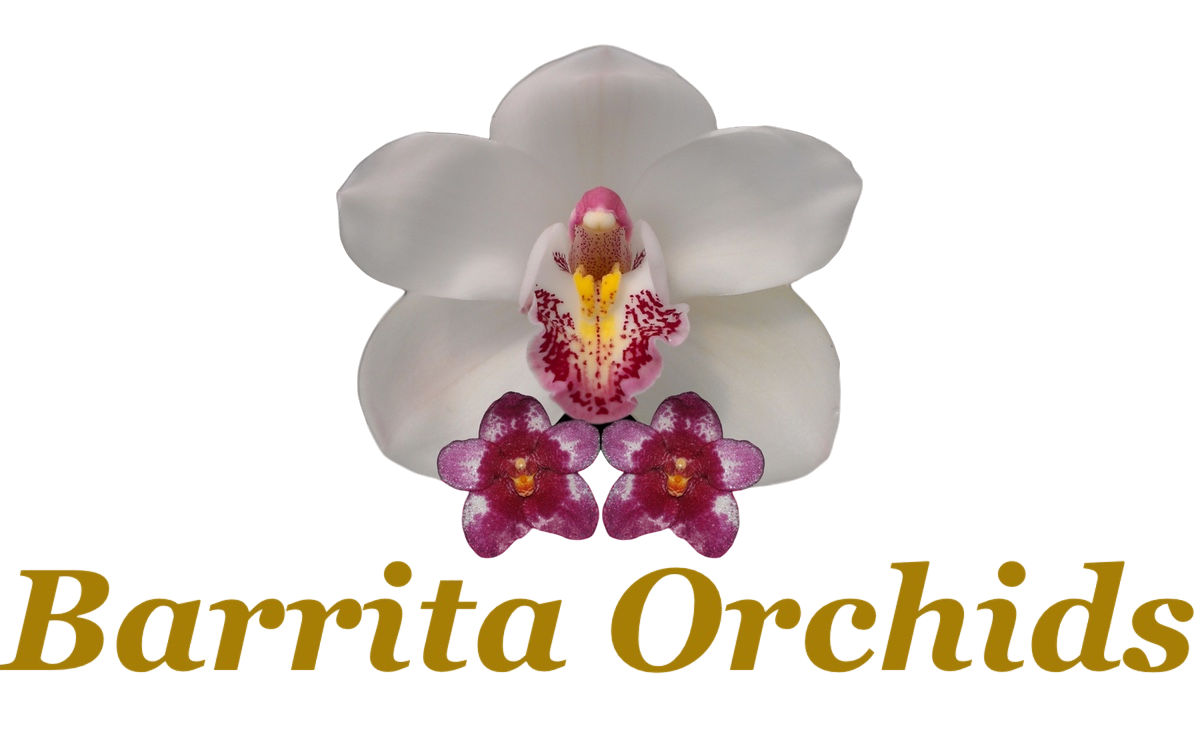Growing Epidendrums
Most Aussies are very familiar with the common orange Epidendrum O’Brienianum. This rambling plant can be so aggressive in its spreading that it has been declared noxious in some local government areas. The modern Epidendrum that we offer is a far cry from O’Brienianum. We have sourced some wonderful plants from the home of Epidendrums in California, Cal-Orchid. James and Lauris Rose have made amazing advancements in this genus and have been honoured by the American Orchid Society for their contribution to the orchid community. After seeing their plants and the exceptionally bright colours, I could not resist having a go at growing them. The plants were selected for their size of bloom and, most importantly, to give us a nice range of colours. So far, these plants have shown to be exceptional in their desire to grow fast and produce flowers. With most having flowered from their first growth (cane) at around twelve months from the flask.
Here at Barrita…
We like to grow in an inorganic way. This is most obvious in our choice of media. From the flask, we use only fine-grade styrene and a little charcoal. Like most epiphytic orchids, Epidendrum benefits from exceptional air movement in the root zone. Having a media that dries quickly allows us to water often. As water is applied from above it drags fresh air down into the pot giving the plant a good freshen-up. Each time we water we fertilise at a very low concentration. Lower concentrations are more readily available to your plant than stronger amounts of fertilizer. We have developed our own blend of fertiliser over many years which contains an excellent ratio of essential nutrients. As our plants grow up and need potting on, we move them into coarser styrene to allow faster drying. Even in our high-watering environment, even fine styrene holds too much moisture for a mature epiphytic plant. In the last year, we have trailed the addition of a little coarse bark to assist in the availability of our fertilizer.
We like to give our plants maximum light, after all, light equals flowers, and it seems to us that Epis love light. This equates to clear plastic in winter and fifty per cent shade in summer. I would prefer to have hard, light olive-coloured leaves on our plants than have dark green ones.
We don’t heat our plants, although at Cal-Orchid they do. It is interesting to observe the way some of the plants increase anthocyanin (which reddens the leaves) as the temperature starts to drop in Autumn. While this doesn’t seem to have a long-term effect on the plant, it may be that some cultivars are less suited to cooler climates. Even in the same cross, we see one plant with red leaves and its sibling beside it not showing any change in colour. The addition of heat is of benefit when you want to speed up flowering.
Tips for growing your Epis at home…
Based on our own experiences in the nursery, here are some tips we believe will help you get the best from our Epidendrums.
- If you choose to grow it in a pot, use an open media. Our plants are not as “wild” as the garden variety Epi and are not recommended for ground growing. We use very open styrene and a little bark.
- Give them protection from extreme cold. Temperatures under 1 degree Celsius should be avoided.
- Plants will benefit from bright light, as much as possible without burning the leaves.
- All plant benefit from a regular application of fertilizer and Epies are no different. We recommend a balanced fertilizer, which is lower on nitrogen.







